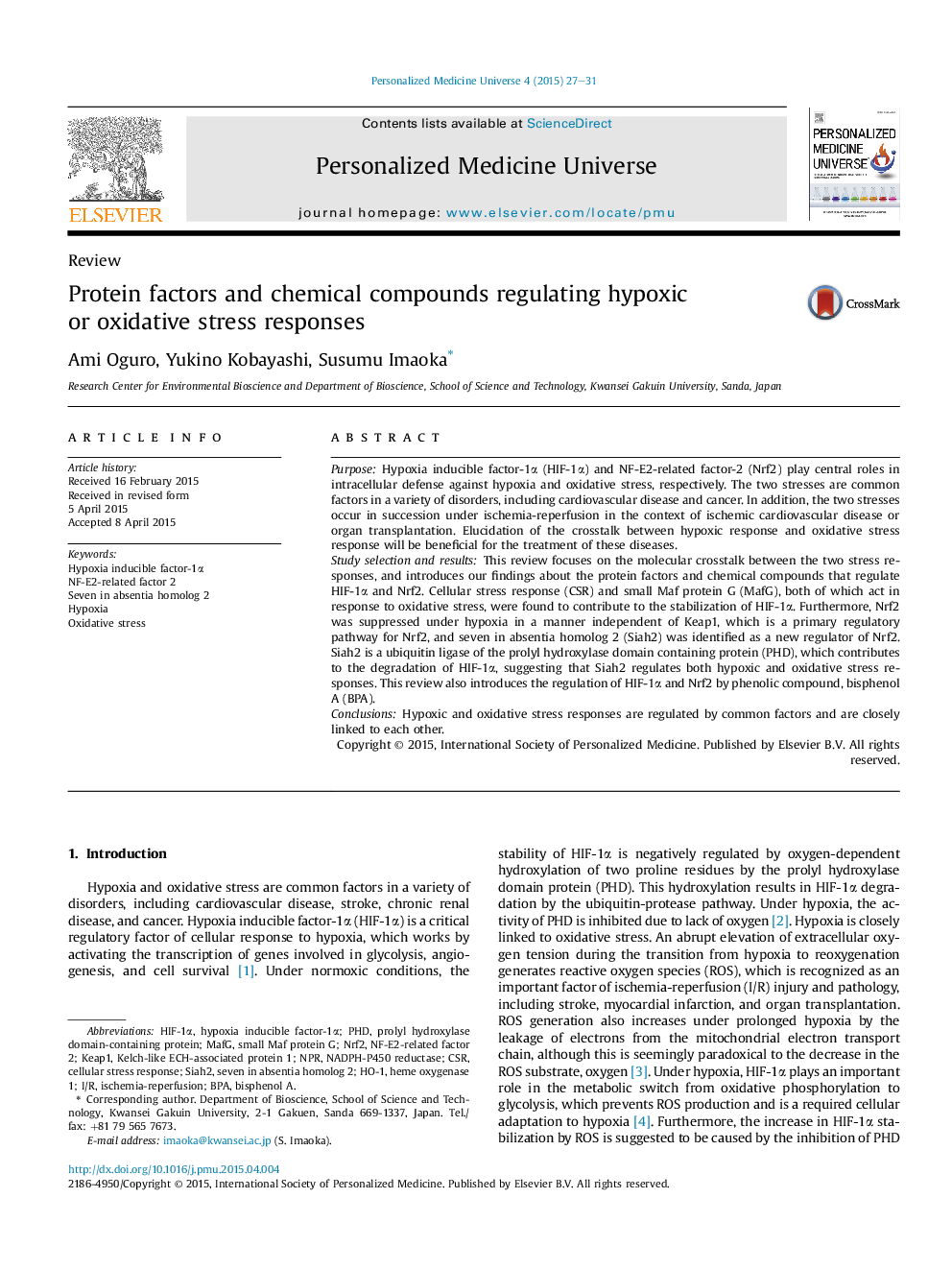| Article ID | Journal | Published Year | Pages | File Type |
|---|---|---|---|---|
| 3382618 | Personalized Medicine Universe | 2015 | 5 Pages |
PurposeHypoxia inducible factor-1α (HIF-1α) and NF-E2-related factor-2 (Nrf2) play central roles in intracellular defense against hypoxia and oxidative stress, respectively. The two stresses are common factors in a variety of disorders, including cardiovascular disease and cancer. In addition, the two stresses occur in succession under ischemia-reperfusion in the context of ischemic cardiovascular disease or organ transplantation. Elucidation of the crosstalk between hypoxic response and oxidative stress response will be beneficial for the treatment of these diseases.Study selection and resultsThis review focuses on the molecular crosstalk between the two stress responses, and introduces our findings about the protein factors and chemical compounds that regulate HIF-1α and Nrf2. Cellular stress response (CSR) and small Maf protein G (MafG), both of which act in response to oxidative stress, were found to contribute to the stabilization of HIF-1α. Furthermore, Nrf2 was suppressed under hypoxia in a manner independent of Keap1, which is a primary regulatory pathway for Nrf2, and seven in absentia homolog 2 (Siah2) was identified as a new regulator of Nrf2. Siah2 is a ubiquitin ligase of the prolyl hydroxylase domain containing protein (PHD), which contributes to the degradation of HIF-1α, suggesting that Siah2 regulates both hypoxic and oxidative stress responses. This review also introduces the regulation of HIF-1α and Nrf2 by phenolic compound, bisphenol A (BPA).ConclusionsHypoxic and oxidative stress responses are regulated by common factors and are closely linked to each other.
